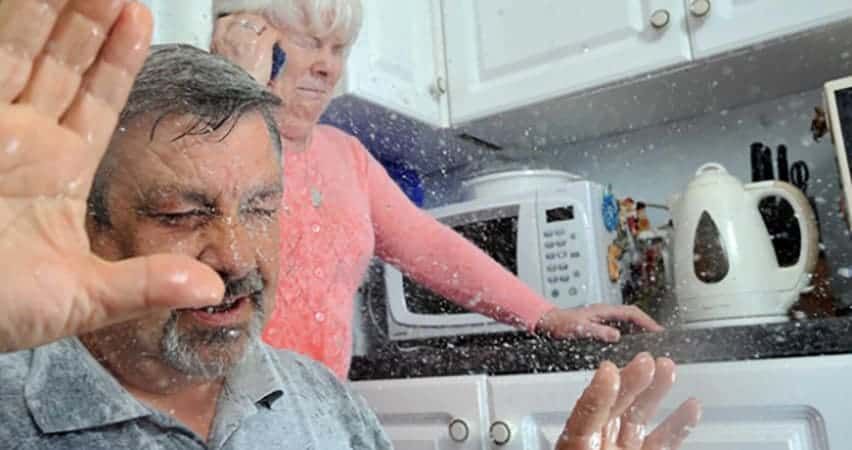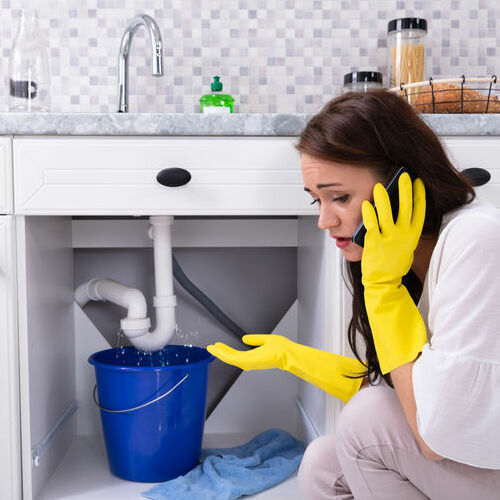We've stumbled on this article involving Common Plumbing Problems in Older Homes listed below on the internet and accepted it made good sense to share it with you on my blog.

Older homes often feature appeal, character, and history, yet they can also bring a host of pipes issues. Whether you're dealing with aging pipelines, low tide stress, or leaks, understanding how to resolve these typical problems is critical to preserving a secure and practical home. In this guide, we'll discover the regular plumbing obstacles dealt with by older homes and give useful remedies to keep your plumbing in top form.
Understanding Typical Pipes Issues
Aging Pipelines
Among the most typical concerns in older homes is aging pipelines. Depending upon the period in which your home was constructed, the pipes may be made from materials that have worn away gradually, such as galvanized steel, cast iron, or even lead. These materials can wear away, become fragile, or develop leakages, bring about water damage and prospective carcinogen.
Low Tide Stress
If you're experiencing low tide stress, maybe due to natural resources, deterioration inside the pipes, or old fixtures that are no more functioning effectively. This can be a significant aggravation, especially in areas like showers and sinks.
Leaking Pipelines
Leaks are another constant issue in older homes, typically triggered by rusty or worn-out pipes. Even little leakages can cause substantial water damages, mold development, and increased water expenses if not attended to without delay.
Out-of-date Components
Obsolete pipes components such as taps, bathrooms, and showerheads not just look old however might likewise be much less efficient, prone to leakages, or inappropriate with contemporary pipes requirements.
Pipe Rust
Rust is a typical problem in older pipelines, specifically those made from galvanized steel or actors iron. Rusty pipes can restrict water flow, trigger staining, and ultimately lead to leakages or pipe bursts.
Analyzing the Problem of Your Pipes
Examining Visible Pipes
Start by evaluating any visible pipelines in your home, such as those in basements, crawl spaces, or under sinks. Search for signs of deterioration, leaks, or corrosion, which can show underlying problems.
Checking for Leaks
Look for leaks by examining locations around faucets, toilets, and under sinks. You can additionally check your water meter before and after a duration of no water utilize to discover covert leakages.
Water High Quality Testing
Older pipes can influence the top quality of your water. Conduct a water high quality test to look for pollutants such as lead, rust, or various other pollutants that may be introduced by maturing pipes.
Solutions for Usual Pipes Issues
Changing Aging Pipes
If your home has old, degrading pipes, take into consideration replacing them with modern products like copper or PEX. This can be a significant financial investment, yet it will protect against future problems and improve the safety and security and reliability of your pipes system.
Dealing With Low Water Pressure
To fix low tide pressure, start by cleansing or replacing old components and eliminating mineral accumulation in the pipes. If the issue persists, it might be needed to change sections of rusty pipes.
Repairing and Changing Leaking Pipes
For little leakages, you can use pipeline clamps or epoxy putty as a temporary repair. However, it's ideal to replace dripping pipelines totally to stay clear of further damage.
Upgrading Components
Upgrading old components to modern, water-efficient designs can boost your home's plumbing performance and lower water intake. Seek components with the WaterSense label for the very best efficiency.
Taking Care Of Pipeline Corrosion
If your pipelines are worn away, replacing them with corrosion-resistant products like copper, PVC, or PEX is the best service. Normal inspections and water high quality upkeep can aid stop better corrosion.
When to Call an Expert
While some pipes problems can be taken care of with DIY options, there are times when it's ideal to hire an expert. If you're taking care of significant leakages, extensive corrosion, or are not sure regarding the problem of your pipelines, a qualified plumbing can offer skilled assessment and repair.
Preventive Maintenance Tips
Regular Evaluations
Consistently evaluate your pipes system for signs of wear and tear. Catching issues early can avoid costly repair work down the line.
Water Pressure Guideline
Guarantee your water pressure is within the suggested variety to avoid stressing your pipes and fixtures. A plumbing technician can set up a pressure regulator if needed.
Water Top Quality Upkeep
Mount water filters or conditioners if your water high quality is poor. This can secure your pipes and fixtures from damages triggered by difficult water or impurities.
Positive Pipe Replacement
If your home has older pipelines, think about positive replacement before significant concerns develop. This can save you from emergency fixings and water damages.
Conclusion
Handling pipes issues in older homes calls for a mix of caution, preventative upkeep, and timely upgrades. By understanding the usual difficulties and knowing when to look for specialist assistance, you can ensure your pipes system stays functional and trusted for several years ahead.
Common Plumbing Issues in Older Homes
Pipe corrosion
Pipe corrosion is a common plumbing issue in older homes. Several factors can cause pipes to corrode:
Water: Ironically, water is the number one cause of pipe corrosion. When water seeps into cracks in pipes, it can cause the metal to rust and break down, leading to leaks or even burst pipes.
Oxygen: Oxygen is another significant culprit in pipe corrosion. When oxygen interacts with water, it can cause the metal to oxidize and weaken.
Chemicals: Chemicals such as chlorine and fluoride can also contribute to pipe corrosion. These chemicals can react with the metal in pipes, causing them to break down over time.
Leaky pipes
Pipes that leak is one of the most common plumbing issues plaguing residents of older houses. While a small leak may not be a problem initially, it can lead to significant problems if left unaddressed. In addition, water damage can be very costly to repair and may cause damage to electric fixtures, promote mold growth and cause many other issues.
Worn-out fixtures
Older homes often have worn-out fixtures which may need replacement. Over time, the finishes on fixtures can wear down, exposing the underlying metal to corrosion. This can cause fixtures to leak or even break completely. It s best to have a professional plumbing contractor regularly inspect the fixtures in older homes and replaces them if necessary.
Faulty water heaters
A leaky water heater can cause severe damage to the home as it can be both a flood and fire hazard. Call a plumber immediately if it appears that the water heater might be leaking.
If the heater isn t working correctly, it could be because the pilot has gone out. The pilot light going out may indicate gas supply issues or leaks. It is also worth checking the thermostat to see if it needs to be adjusted.
If the water heater is making strange noises, it could be due to sediment buildup in the tank. Sediment can interfere with the heating elements and cause them to overheat. Overheating can damage the tank and shorten the lifespan of the water heater.
https://www.norfleetfamilyplumbing.com/blog/common-plumbing-issues-in-older-homes

I hope you enjoyed our piece on Plumbing Problems In Old Homes. Thank you so much for taking a few minutes to read our blog. If you appreciated our page plz be sure to share it. I praise you for your time. Kindly visit our website back soon.
Book Inspection